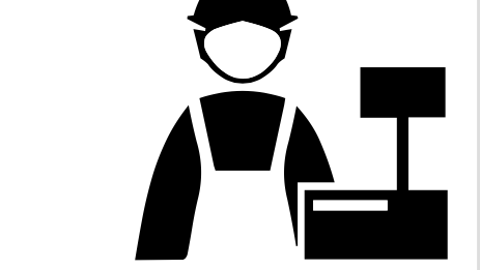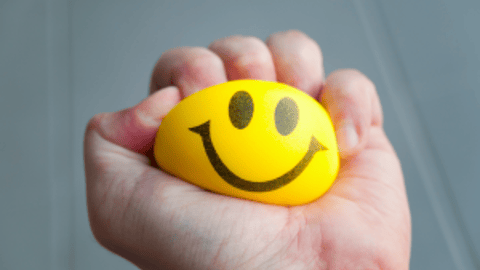'I'm out of gas:' Leadership burnout on the rise as pandemic takes mental health toll
Workers turn to them for support, clients rely on them for answers, companies lean on them in times of crisis.
Yet as the pandemic stretches inexorably on, experts say the never-ending demands on business leaders are pushing some to the brink of burnout.
Stress, uncertainty and long hours are causing malaise among many managers. It's a condition that - if left unchecked long enough - can manifest as exhaustion, disengagement, depression and burnout, they say.
"Leaders are under tremendous strain,'' says Paula Allen, global leader and senior vice-president of research and total well-being at LifeWorks.
"When the pandemic first started, we saw the adrenalin kick in, decisions were made fast and work got done,'' she says. "But it's been relentless. Leaders are exhausted.''
It's not just people in charge hitting a wall 22 months, five waves and multiple variants into the COVID-19 pandemic.
New research has found an extreme level of exhaustion among many Canadian workers from the bottom to the top. Many say they're more stressed now than during initial lockdowns.
Essential front-line workers from nurses to grocery and convenience store clerks have faced innumerable risks of infection. Others face precarious employment without sick days or benefits. Some have lost their jobs altogether and struggle to pay rent and buy food.
In comparison to these hardships, some might be quick to dismiss the challenges of leaders.
Yet many have reported an increase in exhaustion and mental health concerns since the start of the pandemic.
Supervisors, low-level managers, small business owners and senior executives are grappling with increasing demands and surging work volumes. Many are putting in extra hours to keep things running while also providing support and encouragement to workers.
"Business leaders are supposed to be cheerleaders,'' says Mike Johnston, president and CEO of Halifax software company Redspace. "But we've been trying to hustle and pivot and get through this for so long now. I'm out of gas.''
For some managers, the inability to offer more certainty and support to workers is what keeps them up at night.
"When you're the leader of a group of people you want to have all the answers,'' says Barry Taylor, director of operations for The Ballroom, a large entertainment venue in downtown Toronto. "But you don't and you just feel helpless and burnt out.''
Experts say late-stage pandemic fatigue is taking a toll on many managers, with some veering towards burnout.
The symptoms can include emotional exhaustion, detachment, loss of motivation and reduced efficiency - all of which can have a ripple effect throughout an entire workplace, they say.
"It's exhausted leaders leading exhausted teams,'' says Jennifer Moss, a Waterloo, Ont.-based workplace consultant and author of The Burnout Epidemic: The Rise of Chronic Stress and How We Can Fix It. "Managers are trying to be stoic and demonstrate strength and certainty for their employees when many don't feel that themselves.''
Pandemic burnout isn't unique to leaders, but she says there are particular stressors facing those in charge.
"It can be more isolating at the top,'' Moss says. "Senior leaders and managers can sometimes feel very alone.''
There's also a perception that because people in management positions "earn the big bucks'' they should be prepared to cope with the additional responsibility and stress, she says.
"We sometimes forget there's a human behind that role and regardless of how much they're being paid, how much they earn, it doesn't fix the grief and the pain and the stress that they're dealing with,'' Moss says.
The perception that managers should demonstrate unwavering leadership and steadfast support of their workers can increase fears of seeking help, experts say.
"There's a definite stigma,'' says Chantal Hervieux, associate professor of strategy at Saint Mary's University's Sobey School of Business and director of the school's MBA program and Centre for Leadership Excellence. "There's less acceptance for leaders to talk about mental health issues.''
Leaders are expected to be in control, have the answers and be supportive of their team members, she says.
Despite the near constant uncertainty and upheaval of the pandemic, those expectations have remained the same - or increased, Hervieux says.
"Canadian business leaders are working hard to keep things going but some are suffering,'' she says. "They're paying a mental health price and we need to talk about it.''
The challenge of trying to lead during the pandemic is backed up by research.
A survey by LifeWorks and Deloitte Canada released last summer found 82% of senior leaders reported feeling exhausted.
The poll found the top two stressors were an increase in work volume compared to pre-pandemic levels, and the desire to provide adequate support for the well-being of staff.
More than half of those polled said they were considering leaving their roles.
"I've been chatting with other CEOs and there seems to be a shift,'' Johnston with Redspace says. "There's a number of founders looking to get out, to exit. The fun of the chase isn't balanced against the stress of it.''
Still, despite some of the unique pressures facing leaders, burnout appears to be impacting all workers.
A new Bromwich+Smith poll conducted by Angus Reid found more than 70% of people surveyed are worried about their physical and mental health, including sleep issues, fear of COVID-19 and burnout.
Another study by Canada Life found a high level of burnout among Canadian workers. The survey conducted by Mental Health Research Canada found more than a third of all working Canadians are feeling burned out.






